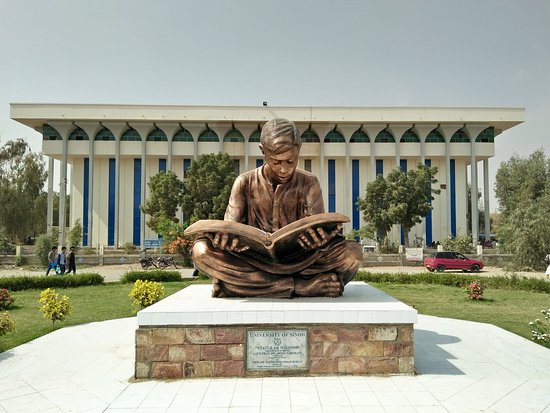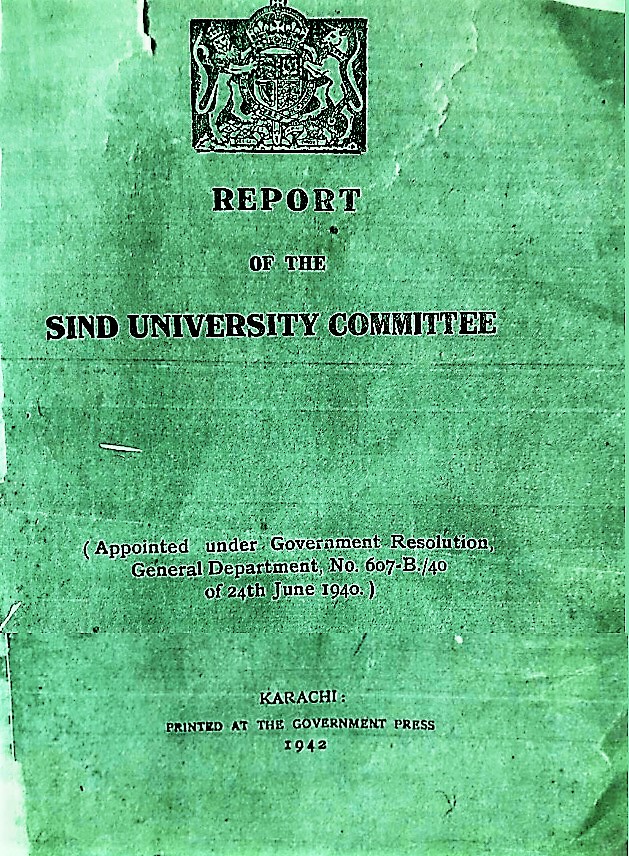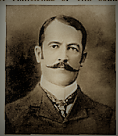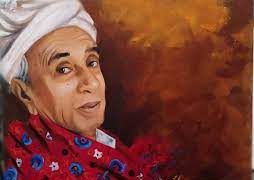
It is the colonial period whose educational history is associated with establishing higher education institutions in Sindh.
Zaffar Junejo
The pre-1947 history of Sindh’s higher education, in broad terms, can be divided into three eras: early history, the Muslim period and the British colonial period. And the colonial period (1843-1947) can be further divided into four distinct phases: a) 1843 to 1887, b) 1887 to 1922, c) 1922-1937, and d) 1937-1947.
It is true that some periods of Sindh’s ancient history yield a blank when we look for evidence about the education system and whereabouts of institutions. However, one cannot easily accept that Indus valley, having advanced human settlements like Mohan-Jo-Daro, would be without its own educational system. I think it will remain a mystery until the Indus script is deciphered.
In the Muslim period, some towns in Sindh were known for having educational institutions. In 1699, Captain Alexander Hamilton observed that “Thatta is famous in teaching of Philosophy, Politics and Theology, and there are four hundred colleges.” Likewise, old Sindh Gazetteers stated that in all respects Thatta and Rohri were University Towns, and Bukkur was also aspiring to become such a town.
As such, however, it is the colonial period whose educational history is associated with establishing higher education institutions in Sindh. The first period could be marked from 1843. The second period started in 1887 when D.J. Sindh College, Karachi, was founded. The establishment of D.G. National College in Hyderabad in 1922 marks the beginning of the third period. The fourth period started in 1937 with the foundation of NED College, Karachi, and continued till 1947.
Dr. M.J. Jackson, the Principal of D.J. College, Karachi, was the first one who conceived the idea that Sindh needed a separate university. Afterwards, in 1924 the Bombay University Reforms Committee deliberated on it, and later on, the idea was included inthe terms of reference of yjr Dow Committee. Professor Aiajz Ahmed Qureshi was of the view that over a period, Persram Jethmal through his The Builder magazine promoted the idea of Sindh University. Much later, in May 1940, G.M. Syed being the Education Minister called a small education conference to consider the question of establishing Sindh University. Around one month later on the 24th of June 1940, a Sindh University Committee was appointed under the Sindh Government Resolution, General Department No. 607-B/40.

The committee consisted of 15 members. It was made bound to submit its report to the Government of Sindh within six months.The first meeting of the committee was held on the 6th of July 1940. In the same meeting, a sub-committee was formed: its members were Diwan Rupchand Bilram, Dr. U.M Daudpota, Dr. G.T. Wrench, S.B. Junnakar, Professor L.H. Ajwani and Professor A.L. Shaikh. The secretary of the committee was asked to draft a questionnaire – covering various aspects of the would-be-university. It was also resolved that the questionnaire would be finalized by the 23rd of July, 1940. The proposed meeting to finalize the questionnaire was, however, held on the 10th of August, in which the draft was improved and then posted to 150 academics within and outside Sindh.
Surprisingly, the committee received only 26 responses by the 30th of October, 1940. As a parallel exercise, the committee nominated three persons to visit various universities of India to observe their working. The nominated persons were assigned different geographical areas: Professor T.M. Advani was deputed to visit universities of Punjab, Delhi, Agra, Aligarh, Allahabad, Lucknow and Banaras. Likewise, Professor Jethmal Parsram and Professor B.J. Vaswani were asked to visit Bombay, Madras, Annamalai, Travancore and Osmania. By the end of November 1940, both committees submitted their reports. The written responses were given to the committee members, and a process was started to document oral suggestions of those who failed to send their written responses. The documentation was completed on the 10th of January, 1941. At that time, the issue of time lapse aroused. Therefore, the Governor of Sindh was approached to extend the time limit. The request was approved, and the committee was allowed to complete the task by the 31st of December, 1941.
There might be more than one reason for the delay in the work of the committee. Among the main factors was the fact that some members were from out of Karachi. And the preparation of Terms of Reference also took a long time. Again, the committee took a considerable amount of time for reading and reviewing the draft. Finally, the committee signed the document on the 22nd of December, 1941, for submission to the Government.

Simple observations regarding the attendance of the committee members show interesting results. The committee’s first meeting was held on the 6th of July, 1941, and the last on the 22nd of December. As many as 29 meetings were held. However, the attendance of individual members varied. The calculation reveals that out of 29 meetings, Sayed Miran Muhammad Shah and Professor B.J. Vaswani attended 28 meetings; Professor L.H. Ajwani was present in 27 meetings; S.B. Junnarker attended 26 meetings; Professor T.M. Advani appeared in 23 meetings and Professor Jethmal Parsram attended 22 meetings. Likewise, the attendance of Dr. T. J. Mirchandani was 17, Miss F. Muhammadali attended 16 meetings, Mr. Hatim A. Alavi was present in 14 meetings, Dr. M.U. Daudpota and Diwan Rupchand Bilaram attended 13 meetings, Dr. G.T. Wrench appeared in 11 meetings and Dr. H.M. Gurbuxani showed his presence in 10 meetings. The lowest attendees were Allama I.I. Kazi and N. B. Butani, with only two and one meetings respectively. Dr. G.T. Wrench resigned due to want of time. A simple calculation reveals that the average attendance was 10. The committee members also had differences of opinion about the security of minority rights, as well as the very type of institution being considered – i.e. whether the university should inculcate cultural and human aspects among its alumni, or it ought to train students to make them useful in new disciplines. There was also the question of affiliation with the Bombay University in the meantime.
Quite some time ago, M. H. Panhwar told this scribe that insecurity among Sindhi Hindus was embedded in the movement for Sindh’s separation from Bombay. The movement pushed Sindhi Hindus to realize that from now on, they would have to live as a minority. Therefore, in each policy forum, their concern was to secure their rights. He added that the separation movement broke the old spiritual bonds amongst residents of Sindh. The new situation demanded constitutional guarantees. Apart from it, another contradiction among the Sindh University Committee members was competence and relevance. Some of the members were highly qualified and had rich experience in managing educational institutes. And on the other hand, some were simple graduates with zero literary experience. Therefore, the committee was not able to perform smoothly. He concluded that on paper it seemed robust, but its members’ incompatible competence slowed its functioning.
Finally, the committee proposed that Sindh needed a university address specific purposes such as to train selected youth for leadership (the University had to make them effective individuals as well as responsible citizen); create new knowledge with a focus on aeronautics, marine biology, marine engineering, irrigation, agriculture and rural economics; preserve and promote Sindh’s culture, literature, history, philosophy and language; and train students in appropriate professions with an understanding to make them economically independent. The committee also suggested that Sindh University’s Senate would decide about the facilities.

Moreover, the committee proposed that structures such as a Research Council, Library Board and Board of Studies should be established in the University. The functions of the Research Council were to initiate and assess research schemes of the departments, review the progress, approve fellowships, manage grants and advise the government or the university. The task of the Library Board was more administrative, its duties were suggesting books, keeping relevant records, and reporting to the University Senate. The Board of Studies committee proposed 17 boards. These were: a) Sindhi language, literature, and culture, b) English, c) Sanskrit, Hindi, Gujarati, Marathi, d) Arabic, Persian, Urdu, and Avesta Pahlavi, e) Latin, Greek, French, German, f) History, Economics, Sociology, Politics, Archaeology and Geography, g) Philosophy, h) Mathematics, i) Education, j) Fine Arts, k) Physics and Chemistry, l) Biology and Hygiene, m) Agriculture and Forestry, n) Engineering, o) Law, p) Medicine and q) Military and Physical Education.
The last Board of Studies, titled ‘Military and Physical Education,’ was not a common domain for any general university at that time. However, it could be speculated that it was an outcome of Sindhi’s sense of insecurity. It could be because Sindh was one of the provinces which lacked a trained paramilitary force, although its most neighboring provinces or distant neighbors had their own militaries, levies or armed communities – or at the very least, in their micro-sociology, weapons played a decisive role. On the contrary, Sindh’s strategic position and well-developed infrastructure – railways, Karachi city, airport and seaport – were tempting all manner of people, some of whom were seen to be aggressive and violent in their nature. Perhaps, then, this is the first official document which shows how Sindhis tried to address their insecurity. However, the proposed document didn’t discuss in detail as to how that particular Board of Studies would secure the interests of Sindh.
Click here for Part-I
__________________
Dr. Zaffar Junejo is Research Scholar, Department of History University of Malaya, Malaysia. Mr. Junejo apart from scholarly contribution also writes for popular media. He could be accessed at: Email junejozi@gmail.com, Cell/WhatsApp +92 334 045 5333 Skype Zaffar.Junejo Facebook facebook.com/zaffar.junejo
Courtesy: The Friday Times Naya Daur Lahore (Published on September 4, 2021)